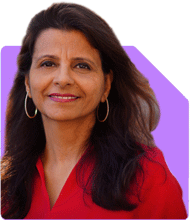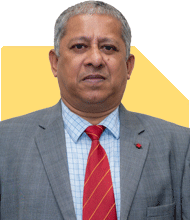Merchant Navy Career: Investing tips for 7-month income cycle?
Ramalingam Kalirajan |9273 Answers |Ask -Follow
Mutual Funds, Financial Planning Expert - Answered on Aug 30, 2024
He has an MBA in finance from the University of Madras and is a certified financial planner.
He is the director and chief financial planner at Holistic Investment, a Chennai-based firm that offers financial planning and wealth management advice.... more

I am 29, Working in merchant navy. I dont get salary when i am at home. So i work for 7 months an year. Salary is 3 lakhs per month. SIP 25k per month.. I want to ask where can i invest as my income is only when i am working .
I'll guide you through a comprehensive strategy that addresses your concerns and helps you invest wisely.
Understanding Your Current Financial Position
Income Structure: You earn Rs. 3 lakhs per month but only for 7 months. This makes your annual income Rs. 21 lakhs, which is substantial. However, the gap in income for 5 months requires careful planning.
Current SIP Investment: You already have an SIP of Rs. 25,000 per month. This is a commendable habit and a great start toward wealth accumulation.
Income Gaps: During the 5 months without income, you need to ensure that your expenses are covered without dipping into your investments. A well-thought-out investment plan can help achieve this.
Strategic Allocation of Your Income
1. Building an Emergency Fund
Importance of Liquidity: Given the irregularity of your income, maintaining an emergency fund is crucial. This fund should cover at least 12 months of expenses, providing security during the months without income.
Investment in Liquid Funds: Consider parking your emergency fund in liquid mutual funds. They offer better returns than a savings account and can be accessed easily when needed.
Separate Account for Expenses: To manage your finances effectively, keep a separate bank account solely for your monthly expenses. Transfer funds into this account as needed during your non-working months.
2. Maximizing Equity Exposure
Growth Potential: Equity mutual funds are ideal for long-term wealth creation. Given your young age, you have the risk appetite to invest in equity funds, which can potentially offer higher returns.
Diversification Across Equity Funds: Diversify your investments across large-cap, mid-cap, and small-cap funds. This will balance risk while aiming for growth.
Increasing SIP Contributions: If possible, consider increasing your SIP amount gradually as your income grows. This will accelerate your wealth accumulation.
3. Incorporating Debt Instruments
Stability and Safety: Given the irregularity of your income, a portion of your investments should be in debt instruments. Debt mutual funds offer stability and are less volatile compared to equity funds.
Investment in Short-Term Debt Funds: Short-term debt funds can be a good option. They provide a balance between returns and safety, making them suitable for the non-working months when income is not available.
Systematic Transfer Plan (STP): Consider using an STP from a debt fund to an equity fund. This ensures that your investments are systematically transferred to equity over time, reducing the impact of market volatility.
4. Exploring Hybrid Funds
Balanced Approach: Hybrid funds, which invest in both equity and debt, can provide a balanced investment approach. They offer growth potential with reduced risk, making them suitable for your situation.
Monthly Contribution to Hybrid Funds: Alongside your SIP in equity funds, consider a monthly contribution to hybrid funds. This diversifies your portfolio and provides a cushion during market downturns.
5. Investing in Gold
Hedge Against Inflation: Gold is traditionally considered a safe investment and a hedge against inflation. Allocating a small portion of your portfolio to gold can provide stability.
Gold Funds or Sovereign Gold Bonds: Instead of physical gold, consider investing in gold funds or Sovereign Gold Bonds. They are more convenient and provide additional returns.
6. Utilizing Public Provident Fund (PPF)
Tax Benefits and Safe Returns: The PPF is an excellent option for long-term savings. It offers tax benefits under Section 80C and provides safe returns over a 15-year period.
Annual Contribution: Consider contributing to PPF annually. The lock-in period encourages long-term savings, and the returns are tax-free, adding to your overall wealth.
7. Avoiding Index Funds and Direct Equity
Disadvantages of Index Funds: While index funds are popular, they simply track the market and do not aim for outperformance. Actively managed funds, on the other hand, are managed by professionals who aim to beat the market.
Risks of Direct Equity: Investing directly in stocks requires extensive knowledge and time. It's risky, especially with your profession, where you might not have the time to manage your portfolio actively. It's better to invest through mutual funds managed by professionals.
8. Life Insurance and Health Coverage
Protecting Your Family: Given your profession's risks, life insurance is essential. Opt for a pure term insurance plan with adequate coverage to protect your family in case of any unfortunate events.
Health Insurance: Ensure you have comprehensive health insurance coverage. Medical emergencies can be financially draining, and having insurance will provide the necessary financial support.
9. Planning for Long-Term Goals
Retirement Planning: Start planning for your retirement early. Given your current income, you can build a substantial retirement corpus by investing consistently in equity mutual funds and PPF.
Goal-Based Investments: Identify your long-term goals, such as buying a house or planning for your children’s education. Allocate specific investments toward each goal, ensuring they are met without financial strain.
Regular Review and Adjustment: Review your investments regularly with the help of a Certified Financial Planner. Market conditions change, and your investment strategy should adapt accordingly.
Final Insights
Balanced Portfolio: Your investment portfolio should be balanced across equity, debt, and hybrid funds. This ensures growth while managing risk.
Discipline and Consistency: Stay disciplined in your investment approach. Continue your SIPs even during non-working months, as this will help you accumulate wealth over time.
Professional Guidance: Seek the advice of a Certified Financial Planner. They can provide personalized guidance and help you navigate market complexities.
Stay Focused on Long-Term Goals: While it might be tempting to chase short-term gains, focus on long-term wealth creation. A well-planned strategy, executed consistently, will help you achieve financial stability and growth.
Best Regards,
K. Ramalingam, MBA, CFP
Chief Financial Planner
www.holisticinvestment.in
You may like to see similar questions and answers below
Omkeshwar Singh | Answer |Ask -Follow
Head, Rank MF - Answered on Jul 21, 2022
Ramalingam Kalirajan |9273 Answers |Ask -Follow
Mutual Funds, Financial Planning Expert - Answered on Apr 17, 2024
Ramalingam Kalirajan |9273 Answers |Ask -Follow
Mutual Funds, Financial Planning Expert - Answered on May 18, 2024
Ramalingam Kalirajan |9273 Answers |Ask -Follow
Mutual Funds, Financial Planning Expert - Answered on Jul 17, 2024
Nayagam P P |7454 Answers |Ask -Follow
Career Counsellor - Answered on Jun 30, 2025
Nayagam P P |7454 Answers |Ask -Follow
Career Counsellor - Answered on Jun 30, 2025
Nayagam P P |7454 Answers |Ask -Follow
Career Counsellor - Answered on Jun 30, 2025
Nayagam P P |7454 Answers |Ask -Follow
Career Counsellor - Answered on Jun 30, 2025
Nayagam P P |7454 Answers |Ask -Follow
Career Counsellor - Answered on Jun 30, 2025
Komal Jethmalani |399 Answers |Ask -Follow
Dietician, Diabetes Expert - Answered on Jun 30, 2025
Komal Jethmalani |399 Answers |Ask -Follow
Dietician, Diabetes Expert - Answered on Jun 30, 2025
Prof Suvasish Mukhopadhyay |2058 Answers |Ask -Follow
Career Counsellor - Answered on Jun 29, 2025
Prof Suvasish Mukhopadhyay |2058 Answers |Ask -Follow
Career Counsellor - Answered on Jun 29, 2025
Dr Dipankar Dutta |1661 Answers |Ask -Follow
Tech Careers and Skill Development Expert - Answered on Jun 29, 2025
























